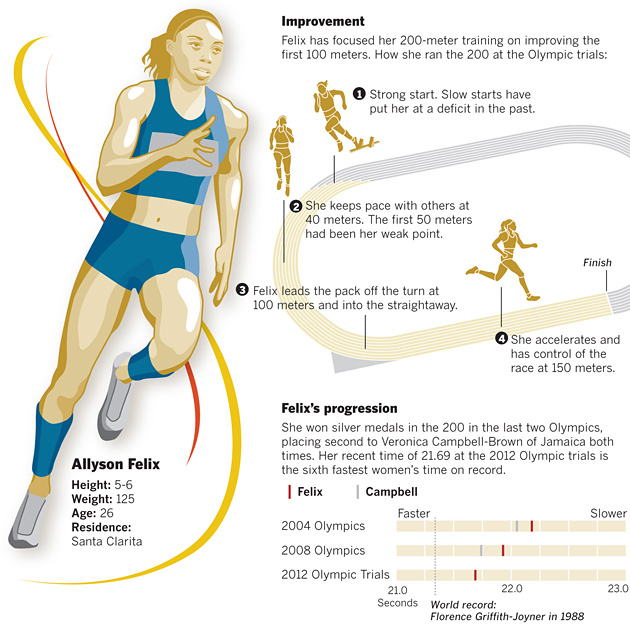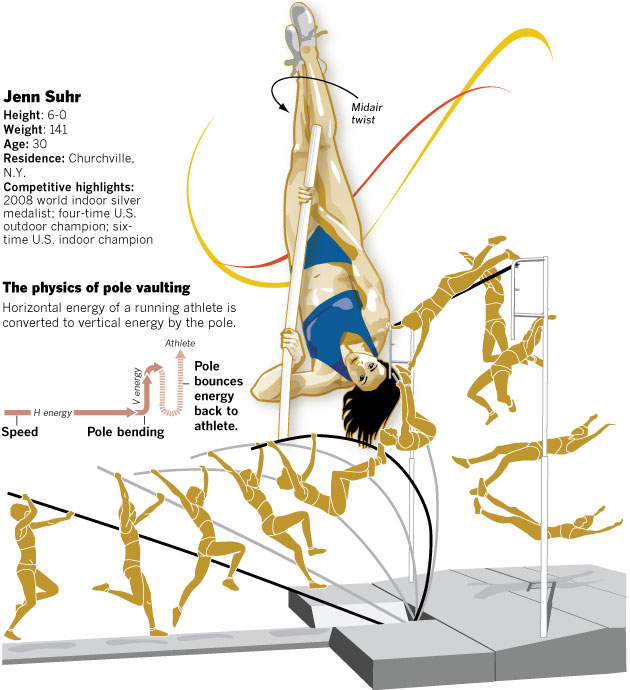Olympics: Track & Field
A closer look at the track & field events and key competitors:
Tyson Gay: Running fast again after battling injuries
Record-setting relay
Ashton Eaton: Decathlon record holder
Top two U.S. decathletes
Brittney Reese: Taking flight
A closer look at Reese
Allyson Felix: Sprinting to gold
Jenn Suhr: High expectations
Oscar Pistorius: The sprinter with no feet
Usain Bolt: The fastest man on Earth
|
Reaction time at start
The time between the start-gun firing and Gay’s first movement. His starts can sometimes be slow. |
Drive stage (0-15 meters)
In 2 to 8 steps, Gay increases stride, straightens posture. |
Acceleration (10-50 meters)
Stride and straightening continue as legs, arms, hips drive toward maximum speed. |
Maximum speed (50-80 meters)
Top runners like Gay can reach about 26 mph. His times during the last 50 meters are his best. |
Maintenance and finish (80-100 meters)
All runners slow slightly, unable to maintain maximum speed, but Gay decelerates less and passes competitors. |
|
Drive
Launches from board off left leg. |
Leap
His lead (right) leg cycles through once while he’s in the air. |
Fly
Modified hang. |
Landing
Moves into pike position, then lands. |
|
Approach
Reese’s 20-step sprint is fast — she can run 100 meters in 11.2 seconds — giving her powerful horizontal momentum. |
Takeoff
She launches from her left leg; her right knee elevates to drive her body upward. |
Fly
She uses a modified hang position; arms symmetrically backward, then forward. |
Landing
Reese says her landing is “not in perfect form” and is an area to improve. |
|
Approach
Suhr rocks back on one foot, then begins to sprint. Foot strikes fall under her hips, which remain high. |
Pole plant and takeoff
Her hands push the pole as high as possible above the shoulders. She pushes off the left foot as her free knee drives upward. |
Drive and upswing
She shifts her leg and hips up while the shoulders go down during a critical phase in which the pole’s rebound propels her upward. |
Going up, while
Suhr pulls herself up into an inverted position, crosses her right ankle over the left and rotates quickly, pushing off the pole before releasing it. |
Clearance
She quickly flexes her hips down and tucks her chin to her chest to clear the crossbar. |














